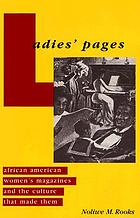A primary source is an artifact or document from the period under study.
Primary source materials include news articles, advertisements, fashion items and other cultural productions of an historic period. Primary sources are a great way to visualize the fashion of an era and to get a sense of the time in which that dress operated.
Note: You do not need to track down the original of a primary source; you may use a copy found in a book, on the web, or reproduced in an article.
Holman Library and the Web are both good places to look.
The Holman Library collection has:
This page offers some strategies and tools for finding primary sources in Holman Library
To find books on the dress of a particular era:
It looks like this - and I included the first five book results:


These can give you a perspective on the society and cultural values of a historic era, as well as a window into the clothing styles and technological advances of the day!
Find a collection of old ads in these books:
 All-American Ads of the 30s by
All-American Ads of the 30s by  All-American Ads of the 40s by
All-American Ads of the 40s by  All-American Ads of the 50s by
All-American Ads of the 50s by  All-American Ads of the 60s by
All-American Ads of the 60s by CQ Researcher is a multidisciplinary collection of reports on contemporary cultural issues - that extend back to the 1920s! This makes it a good source of primary materials!

Step 1: Select Browse and Study Units on the right.
Step 2: Limit to American History and choose the appropriate time range.
Step 3: Choose a Topic
Step 4: Choose Primary Sources, Images and more
The library has paper copies of old magazines! These can be useful as primary sources!

from January 11, 1960
Read this cover story article
(find the paper copy in the library):
What were the concerns with the world's population from a 1960's perspective?
Are they the same concerns we have today?
 Ladies' Pages: African American Women's Magazines and the Culture That Made Them by
Ladies' Pages: African American Women's Magazines and the Culture That Made Them by